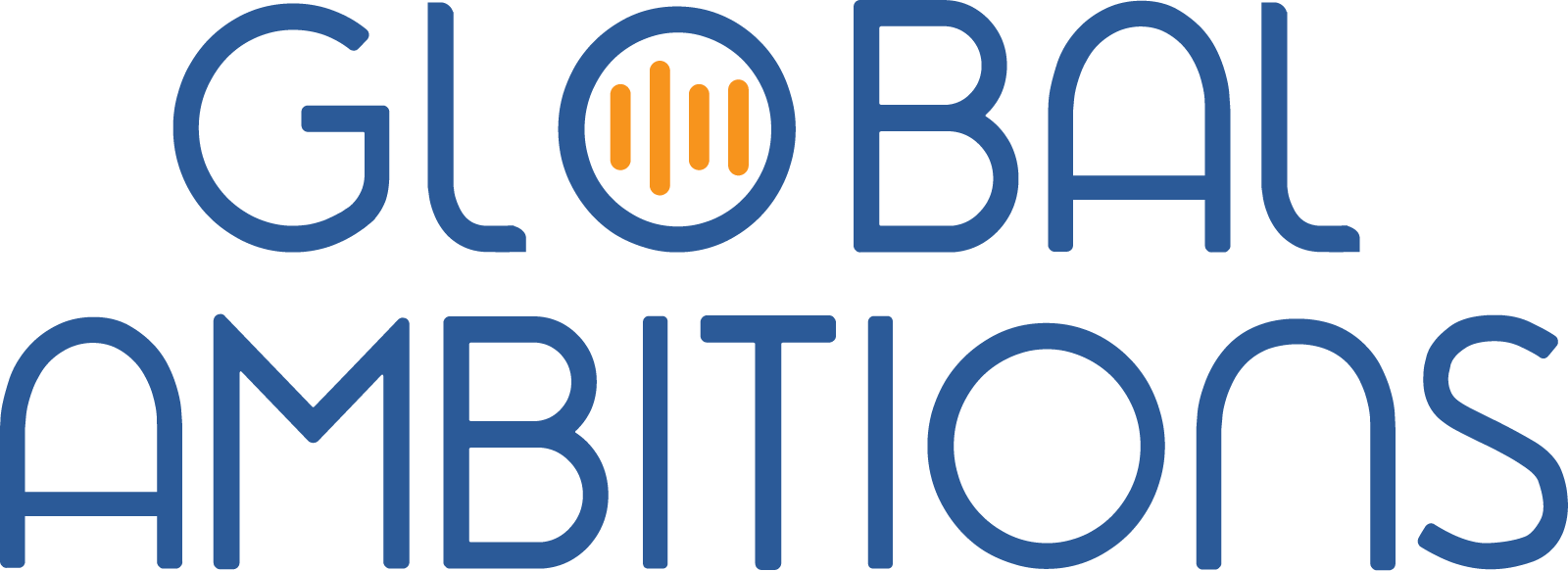Episode 3: Talia Baruch, Global Growth Product Strategist
This is the transcript for Episode 3 of Global Ambitions released on February 1, 2021.
Stephanie Harris 0:04
This is global ambitions. Your 15-minute window into the minds of localization and international go to market experts. Discover how they respond to their biggest challenges. Here’s today’s host.
Antoine Rey 0:19
Hi, everyone. My name is Antoine Ray and I’m your host today for this global ambition podcast episode. This is 15 minutes of localization and international go-to-market strategy and insights that are short, actionable, and sharp. My guest today is Talia Baruch and Talia is a consultant in international product strategy. The topic today is specifically around product fit for new market adoption. Talia, can you please briefly tell us about you and what you do in general?
Talia Baruch 0:51
Hi, Antoine. Thanks so much for having me here. Pleasure as always. So I come from localization 20 something years ago, and then I went to international product and worked at LinkedIn, at SurveyMonkey. After that, I worked at Google Maps and Earth.
Antoine Rey 1:09
Great. Alright, so let’s get straight into the topic in terms of product-market fit, and maybe you can explain what that means compared to other aspects of the go-to-market strategy in international markets. What is the biggest challenge that you have seen people facing with this topic?
Talia Baruch 1:29
I would say three core challenges. There are many challenges, but three core ones I would say are an afterthought. So in considering international expansion as something that we’ll have, we’ll do it later. And this is very much US companies that have that vision. And when you see companies launching from other countries, they have that from the get-go, right? It’s global ready from the get-go. So that’s one thing. Because of that, of course, you know, the backend platform infrastructure is not fully internationalized. They cannot hit the ground running when they are ready down the road to launch internationally.
Talia Baruch 2:04
The second big challenge is a narrow mindset of localization. It is very much seen in our industry as language support, which is critical, but not in the right. Localization, goes beyond language support, it really goes deeper into the product strategy, the product experience. Is the product relevant to provide the right value? Optimized for the range of segments in your target markets? Many, many, many factors and considerations go into that. And these are things elements that companies… I don’t see that companies really have a strong awareness of. So you see localization teams and companies very much focused on language support, which again, is critical. But they’re not then moving into all the other parts of the business, like product, and marketing, and Ops, and legal, and payments and so on.
Talia Baruch 2:52
The third big challenge is horizontal. So international is an extremely cross-functional horizontal effort at companies not structured in that way. So if they do hire an international product lead to drive the vision and the strategy for global adoption, it’s very difficult for that person to then effectively align their OKRs with stakeholders across other functions and teams. Because typically, companies are more siloed in those departments and teams. A horizontal structure.
Antoine Rey 3:27
And they have to then contribute to the OKRs of…
Talia Baruch 3:30
Exactly, I’ve had to very extensively align my international OKRs with every single stakeholder lead in every single function in the company in order to effectively drive my results to the international efforts.
Antoine Rey 3:45
Okay. And in this case, so you’ve seen a lot of different companies that you worked with, can you share with us what went wrong, so that our audience can avoid some of those pitfalls? It might be very useful for them to not go in that direction and avoid it. What are the no no’s?
Talia Baruch 4:02
Sure. So I’ve been sitting in the growth within the or the product org structure. So when, you know, for product managers, when we conceive of a product, right? We have to establish product concept proof, a product-market fit. If you’re sitting in the US, and you’re doing prototyping, user research, and understanding messaging and formulating the value proposition, which is what you’re optimizing for. What needs to happen… typically, that is happening for the domestic segment, right? And then they run with that for a few years. And then after a few years, they say, Okay, now we’re ready to expand internationally. And they take that same product concept proof, which was really tested and built and designed for the US English market. Same exact example, same value, and simply translate everything, right? Just translate the content. Sometimes they will just translate the interface which really doesn’t go a long way. So, you know, of course, when you start doing local content and transcreation, it’s a big benefit.
Talia Baruch 5:06
But really what I’m talking about, big client-side, I would say the product is understanding that, first of all, what are you optimizing for in Japan, or in Germany or in China in the US is different. A different cohort, at least, and then who it is you’re optimizing for is going to dictate the value proposition. I’ll just give you a quick example. So at LinkedIn, the addressable segments are professionals and students. It’s a very different coverage in different markets. In Germany, for example, you’re optimizing for a much higher age cohort because it’s a more aging demographic. So that dictates the value prop of career leadership and content insights, right? Industry insights. So then we optimize more for career leadership. In terms of the features we would prioritize, it’s also a more mature market and with high monetization. So then we would focus on things that are sort of downstream. On conversion to pay, on retention, right?
Talia Baruch 6:09
Then you take another market, like China was a big market for us back in 2014. The age cohort, their demographic is, of course, much younger, right? It’s 17 to 24. Whereas at the same time, Germany was 35 to 45. So the younger cohort that dictates a different value prop, which is a job seeker for internships or entry-level jobs. Which creates the standard, you know, the off stack, lightweight mobile app, that is the single value proposition of job seeker for the younger cohorts, right?
Talia Baruch 6:47
In some markets, you would focus more on a b2b positioning; Germany, Mexico, Japan, UAE, right? These are countries that are more… either they have a high adoption of small businesses, or they’re just hierarchically structured in a way that you really need to have sort of top-down adoption in the market. Either with the partnership with governments like in UAE, or with partnerships with large corporations like in Japan, in order to infiltrate the adoption of your product in the market for brand trust. In other markets, like the US, for example, you might consider a b2c positioning.
Antoine Rey 7:28
So in this case, this is more about the positioning side of things, but I presume there are also some requirements to change the product and to rapidly prototype in different markets for adapting to that market.
Talia Baruch 7:43
Yes, yes. So it is two things. Of course, we don’t want to build a completely new product for each market, not at all. But what we do want to do is be upfront when we build a new product, or when we want to optimize a flagship feature, a flagship product will want to optimize specific features there, we need to be able to hit the ground running, right? So for that to happen, it can happen after we’ve already entered a new market. Because we’ve now realized a local lead or gap or demand, right? A trend we want to quickly adapt to. If our platform infrastructure architecture is on a global standard, which means that it’s more fixed. Yes, it’s not as modular, we cannot, in real-time and instant deploys, iterate on the front end the right experience. We’re going to miss the market. A local competitor is going to win the adoption before us. It’d be harder for us to assimilate faster, timing is really critical. You want to be first to market, right?
Talia Baruch 8:48
This is something I see all the time. It is what we had at SurveyMonkey as well when I joined the company. The first thing I had to do was to refactor the pricing and the payments platforms, the back end, refactor the code so that we could iterate by user IP address, by geolocation, the right pricing plans, the right payment structure. I’m not even talking about currencies. It’s just even breaking down different tiers of pricing. That has to be massaged and customized by different markets, and of course, payment methods and all of that. And then other front end, you know, UI UX adaptations, right? You want to be able to quickly iterate in real-time.
Antoine Rey 9:33
Okay. And do you see many companies that are planning the operational aspect of going to a new market? Like from a marketing perspective, from a support perspective, from a sales perspective? And they totally forget about product fit when they arrive in that market?
Talia Baruch 9:49
Yes, I very much. See that. And again, I’m talking more from the perspective of US-based companies, and including the very big multinational great companies. Not just… it’s not the fault of startups. Actually, startups are easier to train because they’re, you know, you can still build it right from the get-go. But large corporations, where we see the big problem is because they are already set in a certain way that worked for the US. For engineers to, at the beginning, code concatenated strings and do all these shortcuts, with variables and so on. It’s much cheaper and much faster, which is why many companies are very much based oftentimes on global standards because it is cheaper and faster to launch at the beginning. But then when they’re ready to hit International, they have to refactor the code. It’s so much harder for them, even after they’ve learned what they do need to do in order to adapt in a new market, it’s very hard for them to respond fast.
Talia Baruch 10:49
So if you point… Companies see go to market strategy as an ops thing. Okay, we are scouting these new high monetization or high growth potential markets. We’re sending out troops on the ground with operational resourcing local hubs, legal set up, marketing campaigns, a lot of money is is poured into those efforts. Without considering, “Wait a minute, is the product that we’ve built for English US? Is that a good fit for that market?” And it could be a good fit, but maybe it needs a little bit of repositioning of the value proposition. Or a little bit of, you know, maybe some optimization of some core funnels. Maybe onboarding should look different, maybe, I don’t know, the checkout to complete orders funnel needs to be optimized?
Antoine Rey 11:39
Right. And so to that point, is there a practice that you can give people that are listening to us that they should follow so that they could duplicate for their own product.
Talia Baruch 11:50
Yes, it should have, I would say two things. First of all, a global mindset. Yes. From the get-go a global first mindset of what their product is going to look like a what is the value it’s going to bring? Who it is they want to optimize it for? And how do they define and measure success?
Talia Baruch 12:09
I teach… I’ve developed a curriculum for MBA programs in universities here that teaches international product strategy because it’s something that I have not seen any university actually teach. And this is why we have this blindside in the industry. And I always teach them those three pillars, right? Define the problem you’re solving for. And think about that question from a global first perspective. Maybe you’re only building a product for India, that’s great. So you’re just focusing on that market? What is the gap of that market that you’re trying to solve for? Or if it’s a global solution, then you can have a very broad, holistic vision of what would that look like. Integrating all those regional and cultural factors.
Talia Baruch 12:53
Number two, is who it is you’re optimizing it for? What demographic, what use case, what sector, right? Again, that’s gonna be different in some key markets.
Talia Baruch 13:04
And number three, is how you define and measure success, which is really, really important and quite different. The success metrics are very different in different maturity level markets. You might need to customize that. And then those three pillars really dictate the what. What are the core MVP initiatives you are going to drive?
Antoine Rey 13:26
Great. Listen, we’re coming to the end of our podcast. Thanks very much for participating Talia. And before you leave, can I ask you now that you’re part of Global Ambitions, is there someone you would recommend that should come on this podcast and talk about their experience in either international product strategy or in localization and internationalization that you can think of?
Talia Baruch 13:48
Wow, that’s a great question. So many amazing people in our industry, I would really recommend, because this is a topic that we don’t hear enough of, is someone who can talk about cross-cultural communication, in business as well. The cultural aspect of a product experience or a marketing campaign or go to market strategy, right? And really, understanding culture and the culture code across different regions.
Antoine Rey 14:17
Sounds great.
Talia Baruch 14:23
Yeah, I can think about some names and send you. Can I invite everyone to join the parlamINT? You just got to a globalsakegrowth.com.
Antoine Rey 14:35
Thanks very much. Then Talia, and we’ll talk to you very soon.
Stephanie Harris 14:40
Thanks for tuning in to global ambitions, subscribe at globalambitions.net or wherever you get your podcasts.

Talia Baruch
Global Growth Product Strategist. Co-Founder of GlobalSaké, Founder of Yewser (ex Google, LinkedIn, SurveyMonkey)




